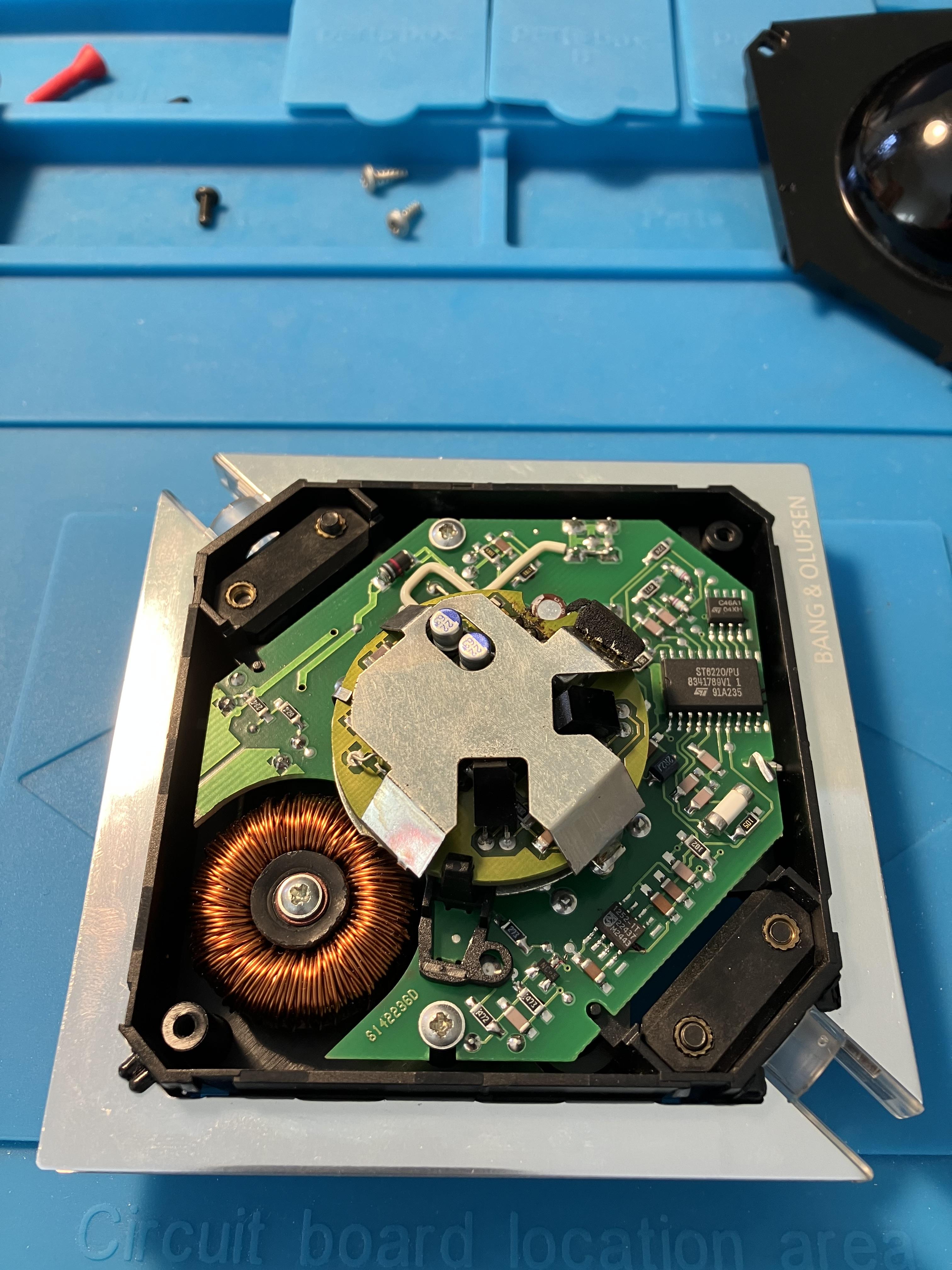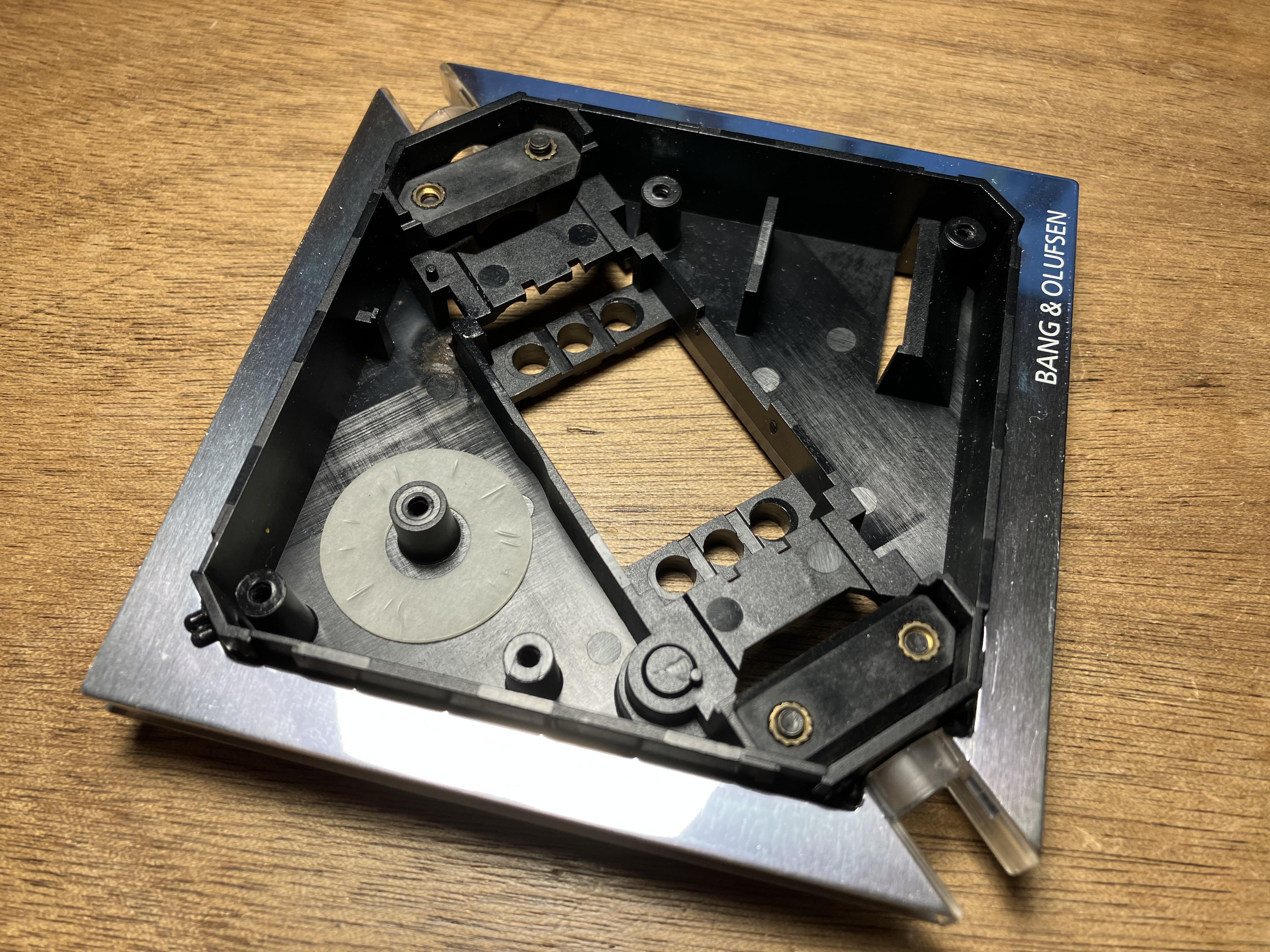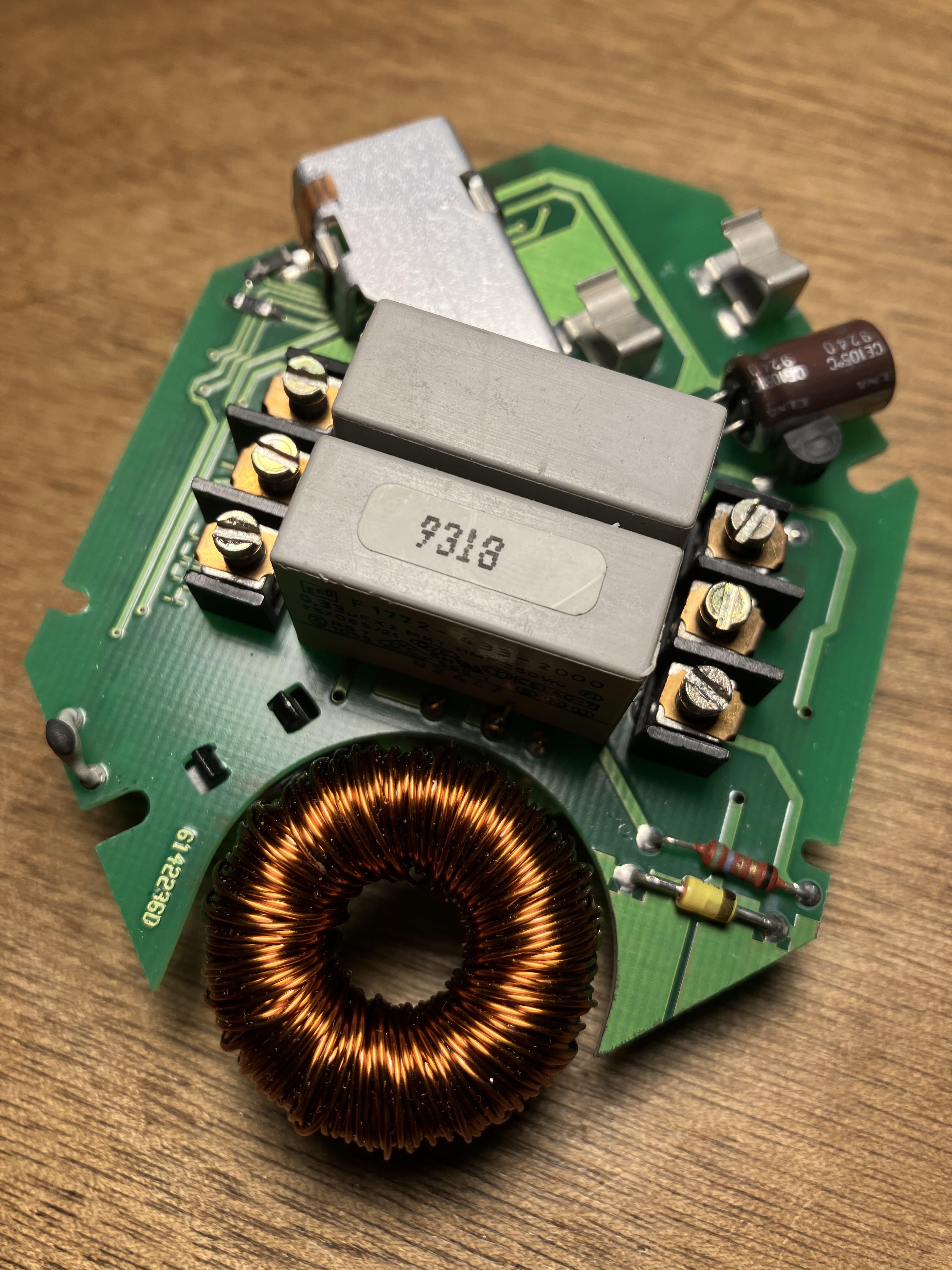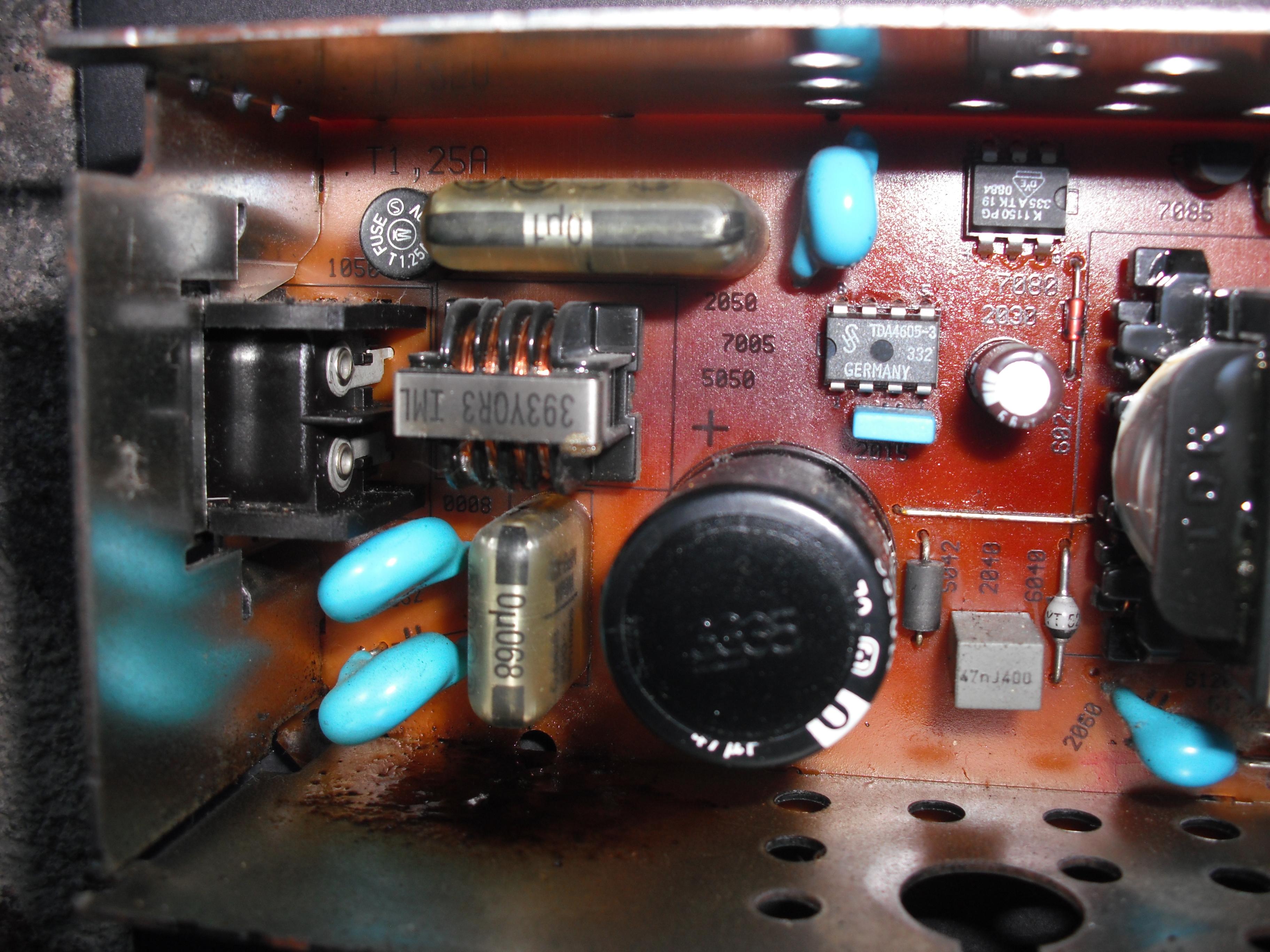- This topic has 33 replies, 6 voices, and was last updated 1 year, 3 months ago by
johansoldradios.
- AuthorPosts
- 6 October 2022 at 01:52 #39602
One observation yes:
I’ve spent hours starring at non-working LC2’s guts in the hope something like you’ve noticed will jump into me and I’ll be able to repair them.
After thinking it twice, I thought that even if repaired, it would be a nonsense to have to use any 40w bulb nowadays and dropped the idea.
As fun and exiting it is to use B&O light control it do not worth it to me.
(But I still have and use my little 6 channels magical box that Beodrives intertechno switches !) 😉6 October 2022 at 02:07 #39603After thinking it twice, I thought that even if repaired, it would be a nonsense to have to use any 40w bulb nowadays and dropped the idea.
I can’t remember what bulb I used but I am pretty sure that I tried my other working LC2 with some type of energy (LED) bulb and it worked (in the on/off mode, which is all I want). I can’t check because it’s in a box somewhere, but I’ll let you know when I have fixed this one!
I use JBMedia’s Lightmanager Pro for day-to-day (night-to-night?) light control and that works very well.
Anyway, resistors (pack size 50!), fuses and Zener on order …
6 October 2022 at 02:19 #39604Looks like a flame-proof type.
Find the reason it burned and replace with one.Martin
6 October 2022 at 03:30 #39605Looks like a flame-proof type.
Thanks Martin – that explains the ‘safety critical’ annotation in the circuit diagram.
Also makes them hard to find!
6 October 2022 at 03:37 #39606I have repaired dozens of them. It’s always the same. Caps defect.
Especially the SMD ones on the ir unit are the worst ever…
Check the capacity of them very, very exactly. There is a ” .. , ..”
I replaced them with X7R SMD caps … no electrolyth any more…
6 October 2022 at 03:59 #39607Thanks Die Bogener. I initially suspected those IR board caps (C7 and 8, both 22uF) after reading this old thread: https://archivedforum2.beoworld.ouronlineserver.com/forums/p/11884/103685.aspx#103685
The IR board isn’t even getting 5V, and that main board resistor (R1) has blown. Not sure whether failed caps (do they fail short?) would have caused this.
I am going to have to come back to this when I have dug out my soldering iron – it’s in a box somewhere …
6 October 2022 at 04:15 #39608I can’t check because it’s in a box somewhere,
my soldering iron – it’s in a box somewhere …
6 October 2022 at 04:21 #39609???
Yes it’s getting to be a pain! So much of my stuff is in boxes since moving to a rental in Feb. We just need UK house prices to crash (any day now …) and then I’ll be able to buy somewhere permanent to live!!
6 October 2022 at 05:19 #39610There are 2 brown caps, the 220uf is prone to fail… yes, with shorts killing the resistor.
6 October 2022 at 06:24 #39611There are 2 brown caps, the 220uf is prone to fail… yes, with shorts killing the resistor.
Thanks – I’ll look at those. Should be easier than changing caps on a BeoLink5000!
6 October 2022 at 07:15 #39612I’ve had two cases of a dead LC2, and both times it was the 5.6ohm resistor (although my notes say R3?) that had gone open. No burn marks or anything. Both units work now.
6 October 2022 at 07:56 #39613Lausvi, your avatar rocks…
6 October 2022 at 12:30 #39601I just got hold of a non-working LC2. I have tested it with a old fashioned 60W bulb and it’s not responding to touch or IR.
Internally, I checked the 5V supply in a number of locations and it’s reading about 0.5V.

I removed the main PCB from the casing and noticed scorch marks – you can see them just above the coil mounting in the picture below:

I first thought that the scorching had come from the mains supply terminals but there is no sign on the terminals or around the other side of the casing.
I therefore checked the PCB and found that Resistor 1 (bottom right, next to the Zener diode) has failed open circuit. (I checked it in-situ because one terminal is not connected to anything other than the non-connected N terminals). According to the manual it’s 5.6 ohm, 10%, 0.4W.

My plan is to simply replace the resistor and see if that cures the fault. Clearly I am hoping that this is the fault and not a symptom!
Any comments/observations? Anyone seen this fault before?
7 October 2022 at 04:11 #39616Metall oxide or wire resistors dont burn… coal resistors do burn.
Thanks Die_Bogener. I actually ordered metal film, so I will probably fit those for testing and then replace with the TE Connectivity Flameproof (which is metal oxide) if I am going to use it permanently.
EDIT: And I have now read Martin’s useful post and link here: https://archivedforum2.beoworld.ouronlineserver.com/forums/p/36289/305349.aspx#305349
7 October 2022 at 04:55 #39617Metal film resistors are neither fusible nor flameproof.
They don’t burn themselves – but they get hot and they burst with a flame.This resistor is a safety component.
If you care about your home and the life and well-being of yourself and the persons living with you, get the real component.
There is a reason flameproof resistors were made and chosen here.Look what damage a flame-proof resistor did to this product.
Imagine anything else fitted in its place…Martin
7 October 2022 at 05:38 #39618Lausvi, your avatar rocks…
Ha, thanks! 🙂
Thanks for that Lausvi – sounds promising! R3 is also 5.6 Ohms but it’s on the top side of the board near that white bridging wire (hidden by the IR module in my first picture). Did you find/fit a flameproof equivalent/replacement?
Ah, now I had a look at the schematics and indeed there were two 5.6 ohm resistors. I believe I had to remove the IR module to get access…
My local dealer had one listed as a ‘flame proof resistor’, which appears to be a SPRX1/2 by Koa. The datasheet states: ‘fixed metal film, Flameproof, Ceramic Body, Flame Retardant Coating”. This was as good as I could get at the time.
In any case neither of the LC2s are in use, and I was planning to recap those anyway if I were to use them again…
7 October 2022 at 05:45 #39619Thanks Martin – I’ll be sure to fit the flameproof one. To be honest, I wasn’t aware that resistors could be ‘flameproof’, but can see that in this application they are being used as a kind of secondary fuse, hence the safety requirement. Every day’s a school-day!
I was aware that capacitors have to be carefully chosen in the PSU stage. I had an issue with a Beocord (V6000) a few years back. My wife watch watching a VHS tape downstairs when I heard screaming that the video was ‘on fire’. Actually it just had lots of smoke coming from it (by design?) rather than fire, but you can see the damage here:

The smoke absolutely stank! The acrid smell hung around and was so bad that the Beocord went in the garden immediately and off to the dump the next day!
7 October 2022 at 05:56 #39620Ah, now I had a look at the schematics and indeed there were two 5.6 ohm resistors. I believe I had to remove the IR module to get access… My local dealer had one listed as a ‘flame proof resistor’, which appears to be a SPRX1/2 by Koa. The datasheet states: ‘fixed metal film, Flameproof, Ceramic Body, Flame Retardant Coating”. This was as good as I could get at the time.
Thanks for the update – very useful.
I did had a quick search and found this: https://www.partco.fi/en/electronic-components/passives/resistors/flame-proof-resistors/12325-fres-05w-5r6.html
… so I’ll either go for that or the TE Connectivity one that I linked to earlier.
7 October 2022 at 10:55 #39614I’ve had two cases of a dead LC2, and both times it was the 5.6ohm resistor (although my notes say R3?) that had gone open. No burn marks or anything. Both units work now.
Thanks for that Lausvi – sounds promising! R3 is also 5.6 Ohms but it’s on the top side of the board near that white bridging wire (hidden by the IR module in my first picture).
Did you find/fit a flameproof equivalent/replacement? The only one I can find is this: https://uk.rs-online.com/web/p/through-hole-resistors/1870824
7 October 2022 at 12:14 #39615Metall oxide or wire resistors dont burn… coal resistors do burn.
- AuthorPosts
- You must be logged in to reply to this topic.





